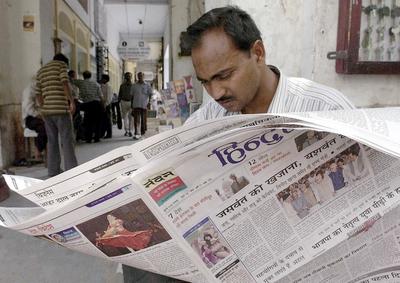This is not surprising given that India has not only survived the global financial crisis, but also revived its growth rate, which has been close to 8 per cent in recent quarters. Yet India receives lower FDI than other emerging economies such as China and Brazil.
As noted in the 2011 World Investment Report, India received $25 billion in 2010, against China’s US$105 billion and Brazil’s $48 billion. When FDI inflows to emerging countries revived after the global financial crisis, India lost out due to a lack of reforms and low investor confidence. The report also observes that India’s global ranking as a destination for FDI fell from 8 to 14. In addition, much of the $36 billion-worth of FDI in 2009 was directed to the real estate sector, with hardly any investment going into manufacturing or the services sector. To some extent, then, FDI continues to elude India. In fact, FDI to the South Asia region as a whole declined to $32 billion, reflecting a 31 per cent slide in inflows to India and a 14 per cent drop for Pakistan, the two largest recipients of FDI in the sub-continent. In India, the setback in attracting FDI was partly due to macroeconomic concerns, such as a high current account deficit and inflation, as well as delays in the approval of several large FDI projects.
China has reached the stage where signs of overheating loom large, and there is a concurrent increase in the overall cost of production in the economy — largely in regards to labour. India is thus well placed to attract FDI, particularly in manufacturing. FDI in manufacturing, as in China, will help productivity growth, improve export competitiveness and create employment opportunities for a huge semi-skilled labour force. Yet the government does not have a priority list of sectors where it wants FDI. Though India has formulated a manufacturing policy to facilitate the share of FDI to 15 per cent of GDP, policies toward land acquisition, environmental factors and infrastructure financing are yet to be made sufficiently clear and investor-friendly.
FDI reforms in India have been progressive and successful at the macro level. According to The Hindu’s Annual Survey of Industry 2011, a positive aspect of Indian FDI has been the increase in the share of export-oriented FDI, particularly in automobiles, auto components and products using embedded software. India has emerged as an auto hub due to investment from foreign multinationals such as Peugeot, Hyundai and Nissan. The decision by major global power equipment firms to set up production bases in India to cater to domestic demand proves that India is an attractive destination for FDI. The plus point is that the majority of FDI is domestic market-seeking and there is no export obligation for foreign investors. This is contrary to China’s FDI policy, where export obligation is mandatory for foreign investors.
Still, FDI inflows have remained low compared to other emerging markets. The important factors that impede these flows are lack of infrastructure, restrictive labour laws, absence of centre–state coordination, a dormant Special Economic Zone policy and a lack of institutional reform. Cost and time overruns due to contractual and institutional failures are also major obstacles, and are often caused by a lack of coordination among central and state government departments on land acquisition and environmental clearances.
It is time to implement policy reforms at both the macro and micro level to send a clear message that India is serious about attracting FDI. In this context, big ticket reforms like FDI in the retail, financial and insurance sectors, and labour laws, will help boost investors’ confidence in the Indian economy. These reforms are all the more important at present as there is capital flight out of the Indian economy because of anxiety over the European sovereign debt crisis. The combination of the crisis in Europe, the down-grading of the US economy, negative growth in Japan owing to the recent natural disasters, and the fact that China is overheating presents an opportunity for India to send the right signals to foreign investors by carrying out all pending reforms. India needs to make a statement that it is a safe haven for investors. It must take control of its macro fundamentals and carry out policy reforms in key areas. A strong political will in this direction is long overdue, and would give a much needed boost to the Indian economy.
Dr Geethanjali Nataraj is a Research Fellow at the National Council for Applied Economic Research, India.


While the impact of Western volatility on Asian markets is cause for concern, this is just one force buffeting the Indian economy. Other risks to watch in Q4 and first half of 2012 are currency volatility, inflation, policy paralysis and farm output.
1) Western Recession — While India’s exports have withstood the global gloom so far, prolonged insecurity in Western markets could have a large impact on exports.
2) Currency Volatility — The weak rupee may provide a short-term boost to exporters, but uncertainty around currency volatility will negate the benefits.
3) Inflation — Inflation remains a consistent threat to business input costs, wage levels, and household consumption, as FSG observed in Q3.
4) Policy Paralysis — This summer’s scandals halted business as usual in Parliament, and may continue to stall crucial policymaking on social and business issues.
5) Poor Farm Output — Agriculture accounts for 17% of GDP and employs over 50% of the populace. A weak monsoon will hurt rural markets and heighten inflation.